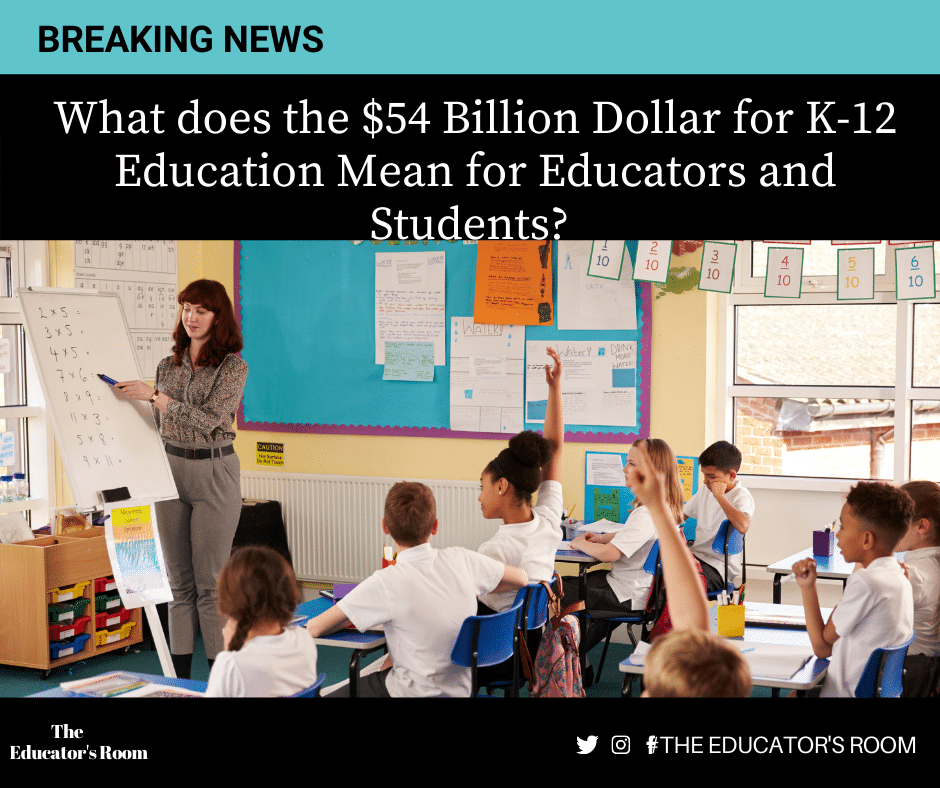After months of battling, Congress has passed a bill where K-12 public schools are poised to receive billions to recover from the COVID-19 pandemic that has ravaged communities and school budgets. In the coming days, President Trump is expected to sign a $900 Billion dollar package to help families, boost the faltering economy and with significant money to help bridge the gap in most district budgets from PreK to higher education. According to the package, $81.9 billion is specified for education, with $54.3 billion will go to K-12 public schools, $22.7 billion to higher education, $4.1 billion to private schools, and a small amount to Bureau of Indian Education schools and American territories like American Samoa and Puerto Rico. This $54 billion package in stimulus money will go first to states then to districts, with high poverty ones having the opportunity to get more than more affluent ones.
While many school systems have benefited from CARES money in March, districts still saw a downfall from funding from their state budgets due to students leaving their public schools among increased expenses for schools as they feed students who are hungry and more tutoring for students who need academic help.
While in other countries there are specific clauses on what schools using the money to address learning loss, this bill allows school leaders in efforts to:
- adequately clean school buildings
- mental health services
- summer or after-school programs
- address learning loss
- school building upgrades and repairs needed for reducing COVID transmissions
- help “low-income children, or students, children with disabilities, English learners, racial and ethnic minorities, students experiencing homelessness, and foster care youth.
In addition to public school students, there’s $2.75 billion for private schools- specific schools that focus on serving students who live in poverty and have been directly affected by COVID. Schools that participate in the upcoming Paycheck Protection Program are not eligible. Surprisingly, the money cannot be used for religious instruction and there must be an intermediate public agency who will help them disperse the monies.
While Democrats urge that a more robust package will be available when Joe Biden takes office in January, this package gives a delay of NAEP or Nation’s Report Card but also provides an extra $28 billion for administering the NAEP. While there is substantial aid for K-12 schools, there is not any money designated for more electronic devices or high-speed internet services for students in poverty.
While some American households will receive one-time payments, here’s some additional information in the 5,600 package found here.






